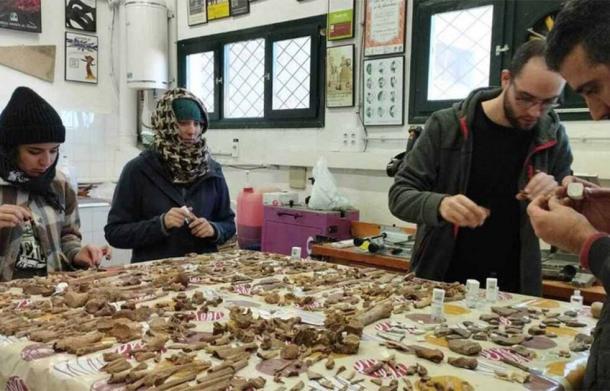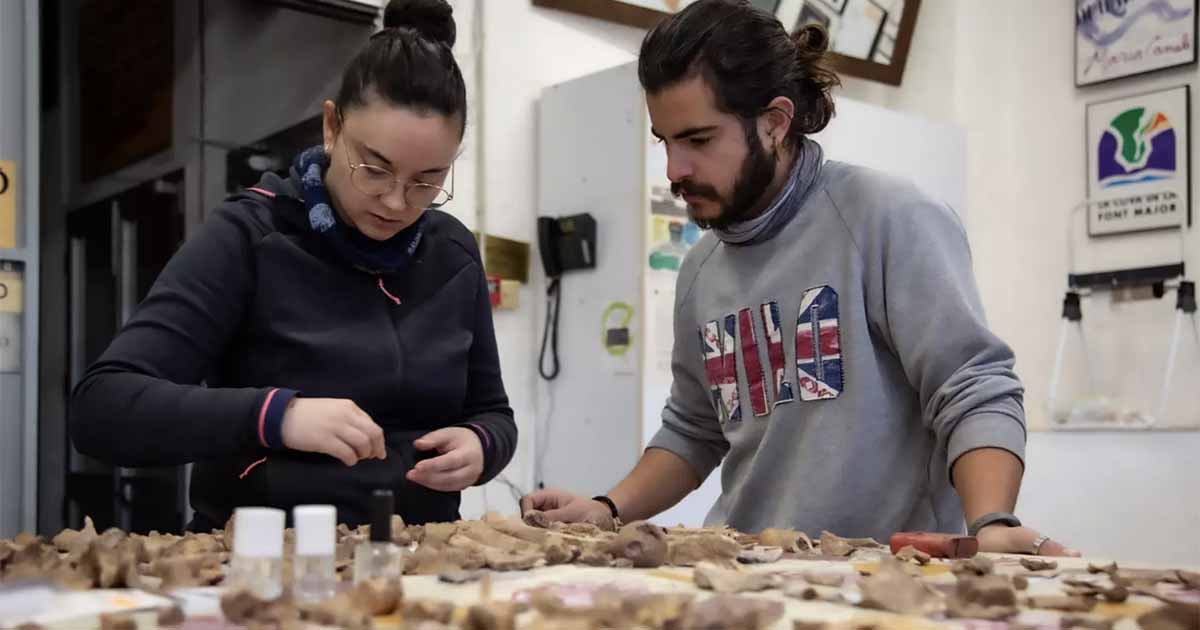Prehistoric Catalonia Burial Cave Reveals Over 7,000 Human Remains
Archaeologists in Catalonia, northeastern Spain, have unearthed human and animal remains and ornamental objects spanning from the Neolithic to the Bronze Age. The Cova dels Xaragalls cave, located in Vimbodí i Poblet, has unveiled a rich, prehistoric burial site that dates back from 7,000 to 3,000 years ago. The extended usage of the cave, over such an extensive and enduring timeframe, may provide abundant insights into the evolution of prehistoric society, especially regarding death and burial rituals.
- Five Incredible Funerary Practices from the Ancient World
- Bizarre Rituals of Blood and Death That Are Rooted in the Ancient World
The most recent excavation campaign at the site took place from December 4 to December 22, 2023, led by Dr. Miguel Ángel Moreno, Dr. Josep Vallverdú and Alfredo Suesta, who are researchers at IPHES-CERCA. Also taking part were Dr. Antonio Rodríguez Hidalgo, a professor in the Department of Prehistory and Archaeology at the University of Seville, and an associate researcher at IPHES-CERCA.

A human skull discovered in the Cova dels Xaragalls burial cave in Catalonia. (Antonio Rodríguez-Hidalgo / University of Sevilla / IPHES-CERCA)
Was the Catalonia Burial Cave a Haunt for Neanderthals?
“We know that this cavity was used as a burial cave, it was a cemetery in which the bodies of the deceased were deposited,” explained Antonio Rodríguez Hidalgo in a press release published by the Catalan Institute of Human Paleoecology and Social Evolution (IPHES). “It was used for this [purpose] for millennia, which generated a large deposit of human corpses.”
The excavation revealed a significant number of animal remains, including those of sheep, goats, pigs and cows—common livestock in Mediterranean prehistory—as well as dogs and horses. A section of the cave even contained the skeletal remains of wild goats, along with charcoal and burnt bones dating back over 40,000 years!
These findings raise the possibility that the cave was once visited by Neanderthals, our ancient human relatives who inhabited Eurasia until approximately 40,000 years ago. Previous studies have shown that prehistoric humans in parts of the Iberian Peninsula, shared between Spain and Portugal, used caves as burial sites over extended periods of time.

Classification of artifacts unearthed in the burial cave in Catalonia. (Antonietta del Bove / IPHES-CERCA)
Deliberate Manipulation of Human Bones at Burial Cave in Catalonia
A study published in PLoS ONE in 2023 delved into the manipulation and utilization of human bones within a cave burial site spanning thousands of years. In the study, researchers investigated multiple human remains, attributed to at least 12 individuals, discovered in Cueva de los Mármoles, a cave located in the Andalusia region of southern Spain.
Dating back to roughly the 5th to 2nd millennia BC, the remains suggest that individuals were interred in the cave while still undergoing partial decomposition. Newsweek reported that the examination revealed deliberate alterations to the bones post-mortem, such as fractures and scrapes likely inflicted during attempts to extract marrow and other tissues from the deceased.
Prehistoric farmers and herders in southern Spain practiced burial rituals within a sizable cave, but evidence suggests a potential post-mortem manipulation of the deceased's remains. The discoveries imply that individuals might have intentionally modified the bones for various purposes, including toolmaking and potentially consuming bone marrow.
- Ancient Burial Rituals: Proving You Can Take It with You... and What You Take Says a Lot
- Neanderthal Child Remains Found in Catalonia Cave
The observed fractures, scrapes and cuts on the bones occurred while they were still in a “fresh” state, likely within the first year following death. This indicates deliberate actions carried out on the bones after the initial burial, shedding light on possible practices involving the manipulation of human remains during ancient times.
Another significant aspect of the investigation was the access to the Sala Gran, which facilitated the documentation of new archaeological layers. Within this area, skeletal remains of wild goats (Capra pyrenaica/ibex) were discovered, along with charcoal and bones that were burned over 40,000 years ago, which ties up with the aforementioned chronologically.
According to, Dr. Josep Vallverdú, this set of remains “may be the first evidence of Neanderthal cave settlement in the Muntanyes of Prades, from the same period of the Foradada Cova and the Abric de la Scream, in Calafell, or in closer Musterian deposits next to the Abric Romaní de Capellades.”
Top image: Archaeologists analyzing the remains from excavations at the Cova dels Xaragalls burial cave in Catalonia. Source: IPHES-CERCA
By Sahir Pandey
References
Georgiou, A. 21 February 2024. “Thousands of Human Bones Found in Cave Used As Tomb for Four Millennia” in Newsweek. Available at: https://www.newsweek.com/thousands-human-bones-found-cave-used-tomb-four-millennia-1872118
Serret, C. 26 January 2024. “A cave full of talking remains” in diari més. Available at: https://www.diarimes.com/es/camp-tarragona/conca-barbera/240126/cova-plena-restes-parlen_139624.html

















